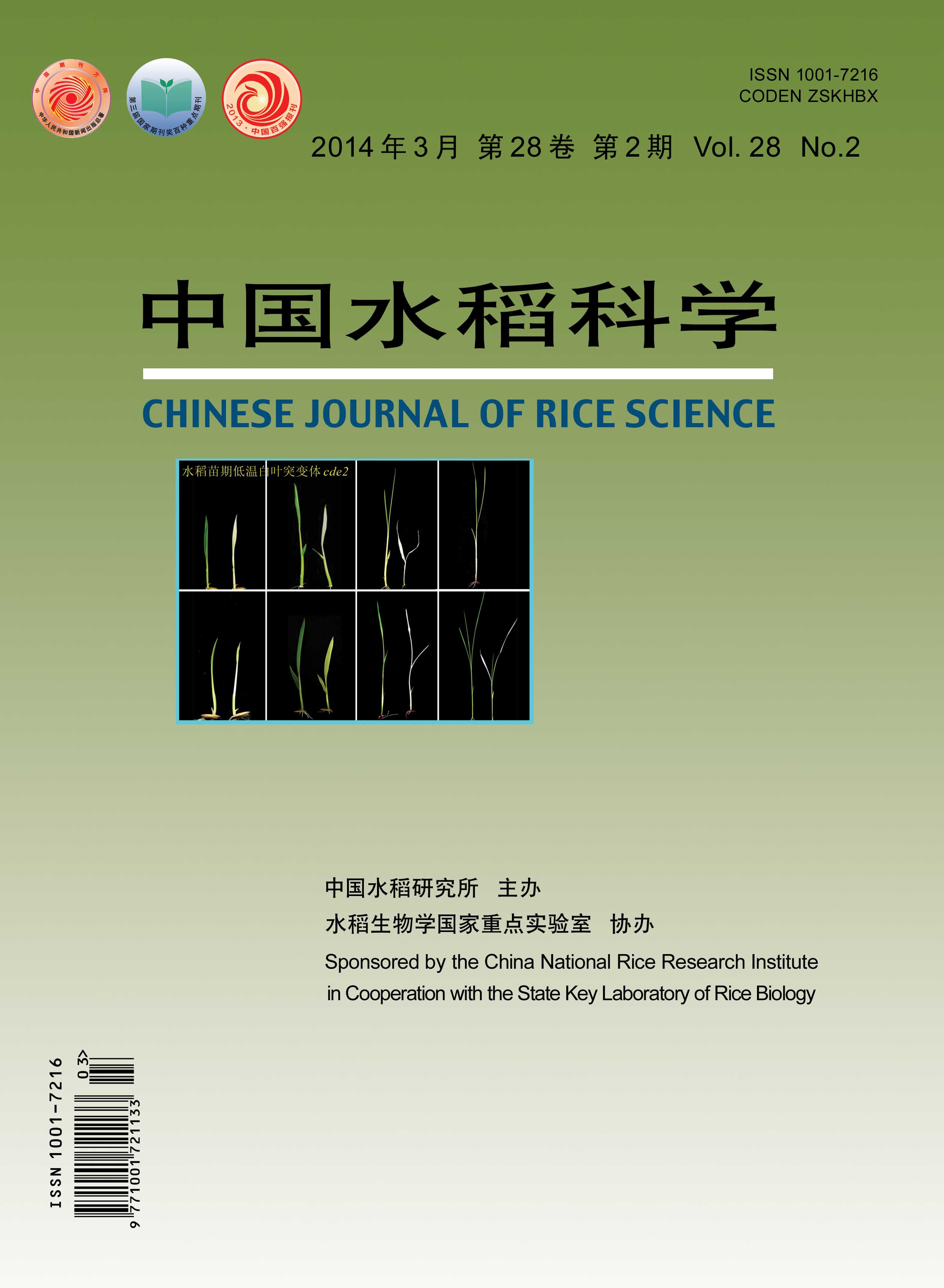|
|
Interactive Effects of Light Intensity and Nitrogen Supply on Dry Matter Production and Distribution of Rice
HUANG Lifen, QUAN Xiaoyan, ZHANG Rong, YUAN Yi, ZHAO Wei, JIANG Lingling, SHI Jinqi,
2014, 28(2):
167-176.
DOI: 10.3969/j.issn.1001-7216.2014.02.008
By hydroponic pot experiment, with two indica types (Shanyou 63, Liangyoupeijiu) and two japonica types (Xiushui 63, Yongyou 8) as experimental materials, two elements including light intensity (L0, L1, L2 represent 100%,81.88% and 51.06% of the natural light intensity,respectively) and nitrogen supply (N1, N2, N3 represent the N level of 7,21,35mg/kg,respectively) were designed from transplanting to maturity in rice. The effects of different light intensity, nitrogen levels and their interactions on production and distribution of dry matter of rice were investiged. The main results were as follows: 1) Grains yield of per plant was significantly affected by shading and light nitrogen interactions(FLight=63.34**,FLight×Nitrogen=58.55**). To a certain extent, shading improved yield under low nitrogen (N1); under medium (N2)and high nitrogen (N3), too much shading treatment decreased grain yield significantly. 2) At maturity stage, the influences of light intensity on dry matter weight of various organs were as follows: Leaves were L2>L1>L0, stems and sheaths were L1>L2>L0, roots and panicles were L0>L1>L2. Dry matter weight of roots and panicles of L0 treatment were higher than those covered with two layers of shading (L2) by 28.47% and 5.67%, respectively. Thus, at maturity stage, it was demonstrated that high intensity light was beneficial to rice roots and spike, while low intensity light increased the dry matter weight of leaf and stem to various degrees. 3) The dry matter accumulation of shoots increased significantly by higher nitrogen rate in the whole growth stages. However, shading firstly inhibited dry matter accumulation of shoots during the earlier growth period, then promoted it during the later growth period. The trends were as follows: L2 < L1 < L0 at jointing stage, L2 < L0 < L1 at heading stage, L0 < L2 < L1 at maturity stage. With higher nitrogen rate and lower intensity of light, dry matter accumulation increased more obviously. 4) Rootshoot ratio gradually reduced with growth stage forward, higher nitrogen application and lower light intensity. 5)The quadratic curve relationship between dry matter accumulation and grain yield were significantly at the heading stage.
|

